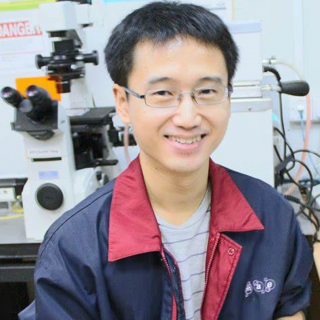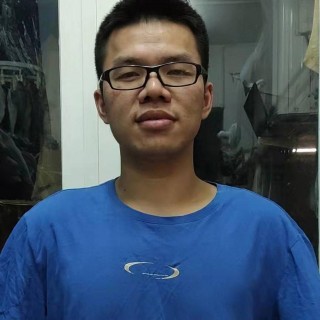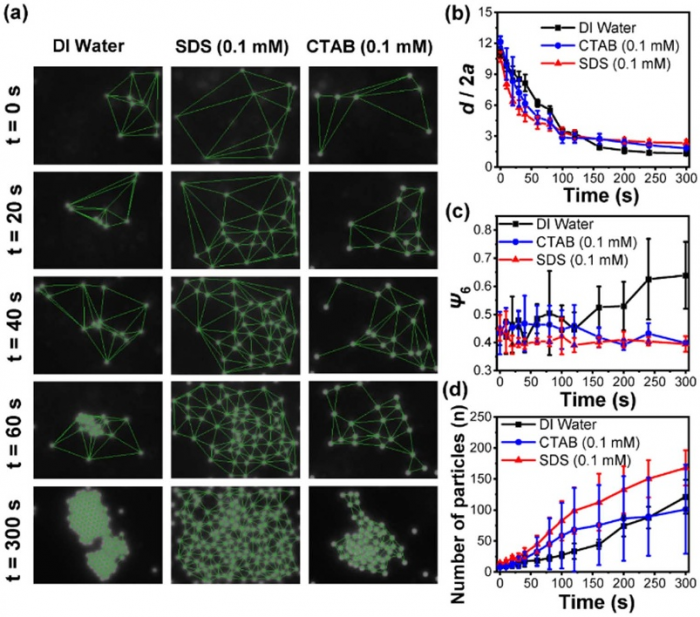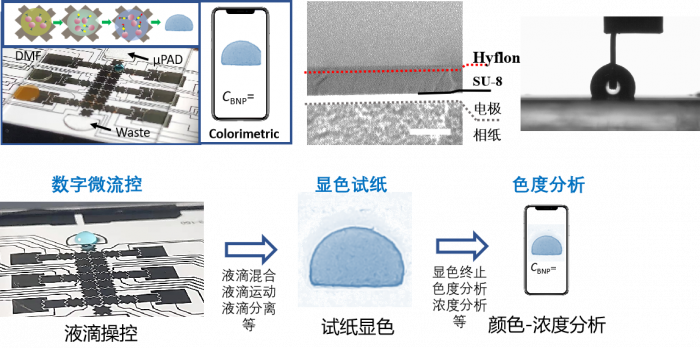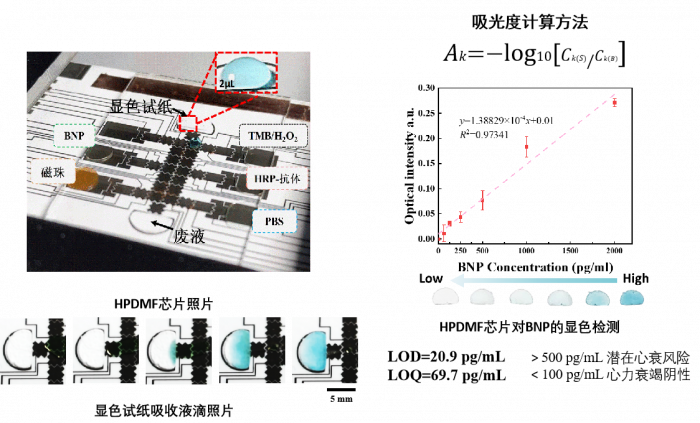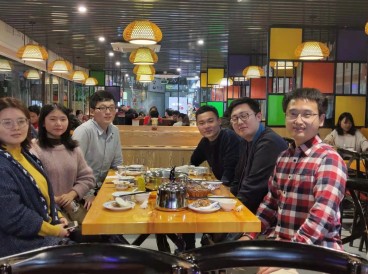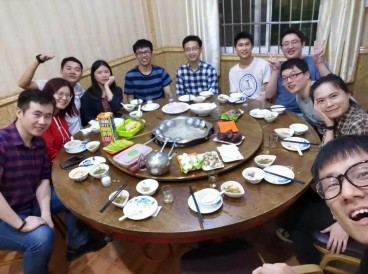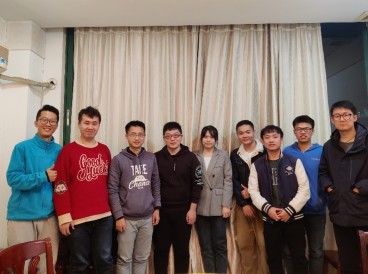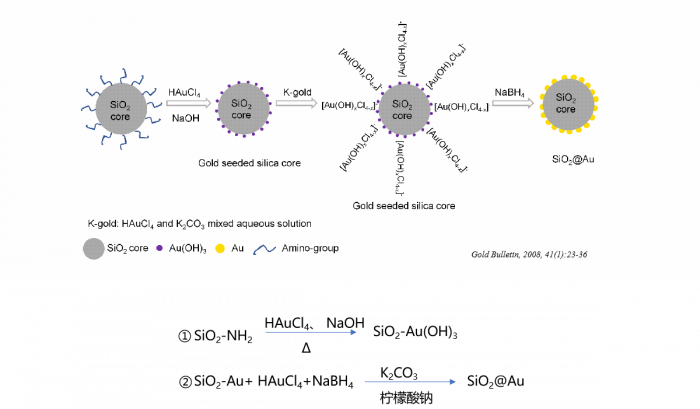
Figure1. Synthetic procedures of the SiO2@Au core–shell nanoparticles. We study the effects of the morphology of gold clusters on the surface of SiO2@Au core–shell nanoparticles on their photothermal conversion performance by changing the amount of gold salt, the pH value of the growth solution, and the volume and concentration of the reducing agent used in the chemical synthesis of SiO2@Au.
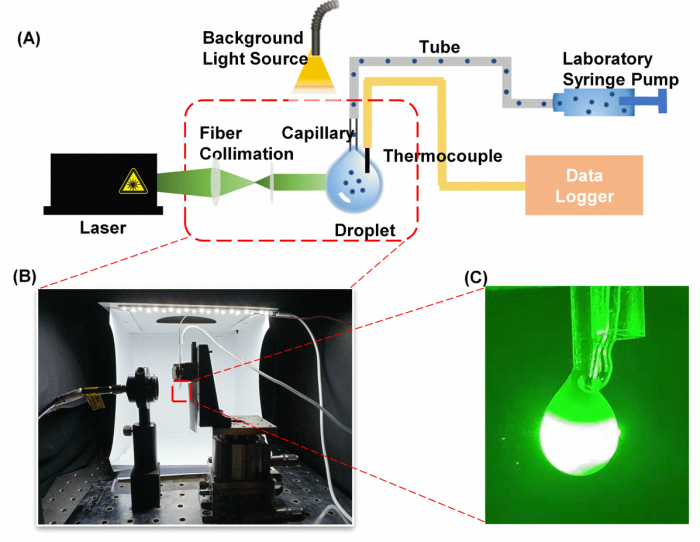
Figure2. Photothermal effect testing device: (A) Schematic of the experimental setup for characterizing the photothermal performance. (B) Photo of the experimental setup. (C) An image showing the laser passing through the droplet.
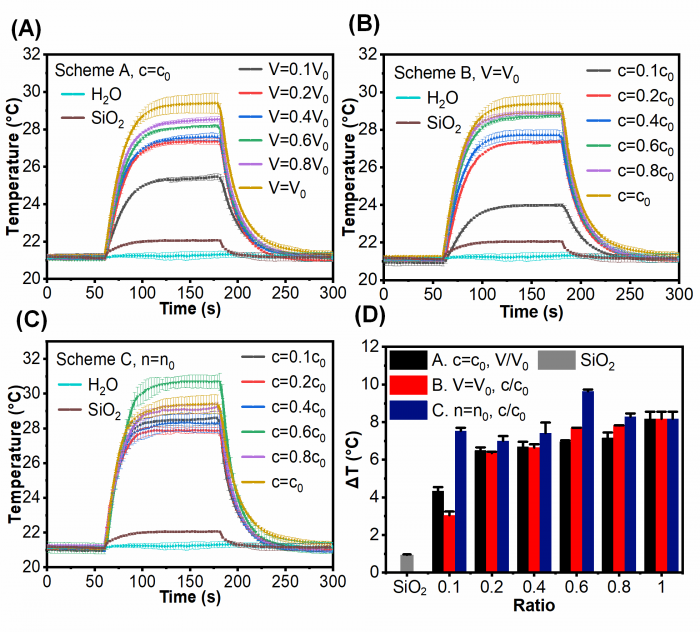
Figure3. Temperature evolutions of Scheme A (A), Scheme B (B) and Scheme C (C) under laser irradiation. The power of the laser was fixed at 53.6 mW. (D) Temperature rise after 120 seconds laser irradiation of Schemes A, B and C, and the abscissa represents the ratio of c/c0 or V/ V0 (volume ratio of K-gold to seed: 80 : 1 and pH ¼ 10.31, V0 ¼ 4 mL and c0 ¼ 6.6 mM of NaBH4).

Figure4. The influence of NaBH4 participating in metallization of gold-seeded silica nanoparticles. (A) The TEM images of SiO2@Au with different volume of NaBH4 at V ¼ 0.1, 0.2, 0.4, 0.6, 0.8, 1.0 V0 (i–vi) while keeping concentration constant, and (B) the corresponding UV-Vis absorption spectra for Scheme A. (C) The TEM images of SiO2@Au with different concentration of NaBH4 at c ¼ 0.1, 0.2, 0.4, 0.6, 0.8, 1.0 c0 (i–vi) while keeping volume constant and (D) the corresponding UV-Vis absorption spectra for Scheme B. (E) The TEM images of SiO2@Au under different concentration of NaBH4 at c ¼ 0.1, 0.2, 0.4, 0.6, 0.8, 1.0 c0 (i–vi) while keeping amount of substance constant and (F) the corresponding UV-Vis absorption spectra for Scheme C. (volume ratio of K-gold to seed: 80 : 1, and pH ¼ 10.31, V0 ¼ 4 mL and c0 ¼ 6.6 mM of NaBH4).
Articles:
Lulu Yang, Zhibin Yan*, Lu Yang, Jianxin Yang, Mingliang Jin, Xiaobo Xing, Guofu Zhou and Lingling Shui*, Photothermal Conversion of SiO2@Au Nanoparticles Mediated by Surface Morphology of Gold Cluster Layer, RSC Advances 2020, 10, 33119-33128




